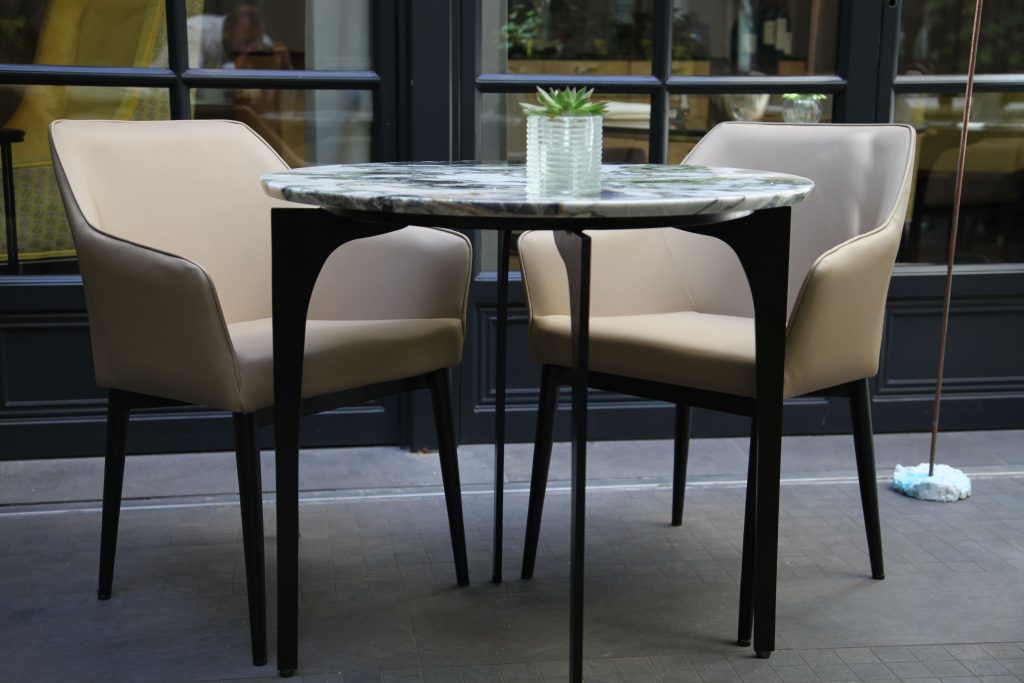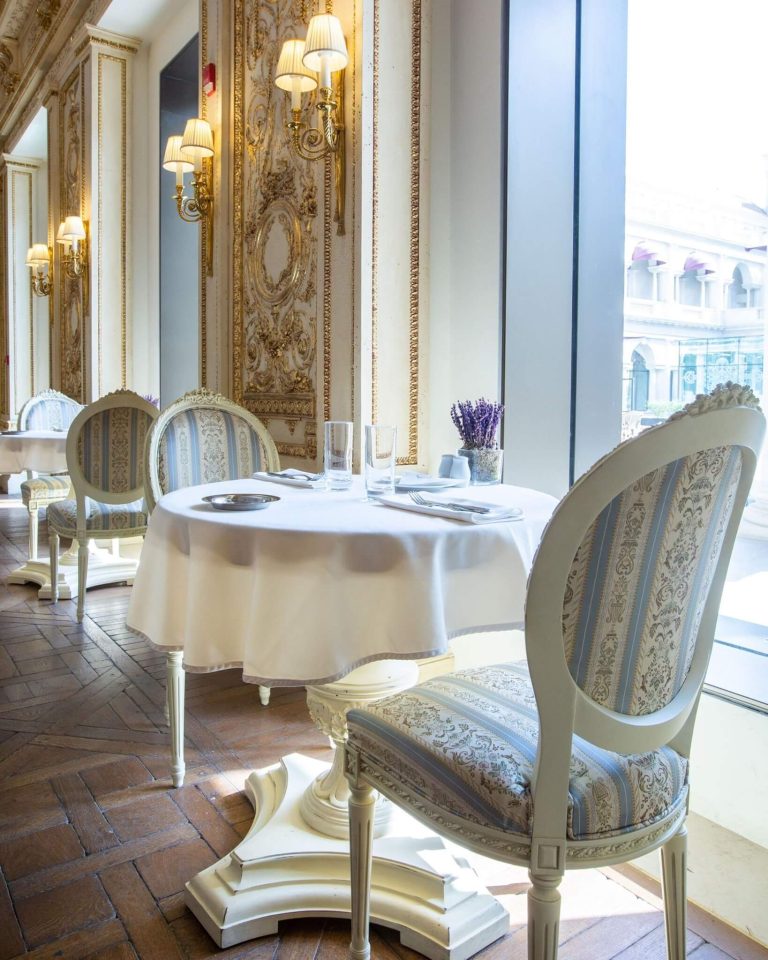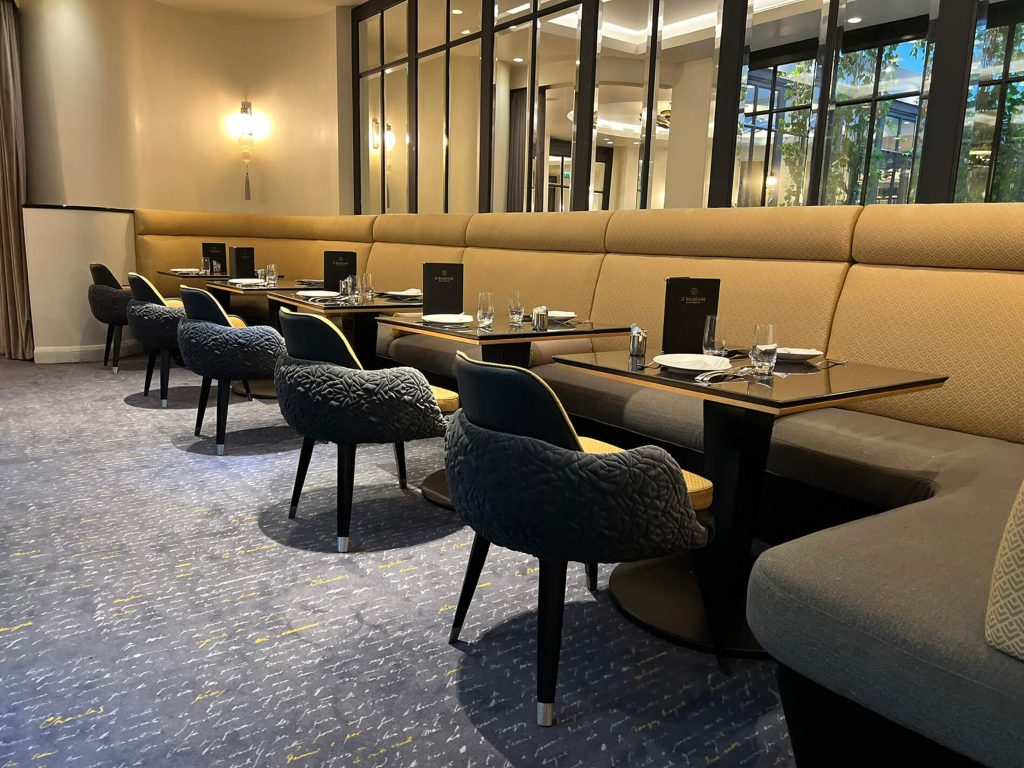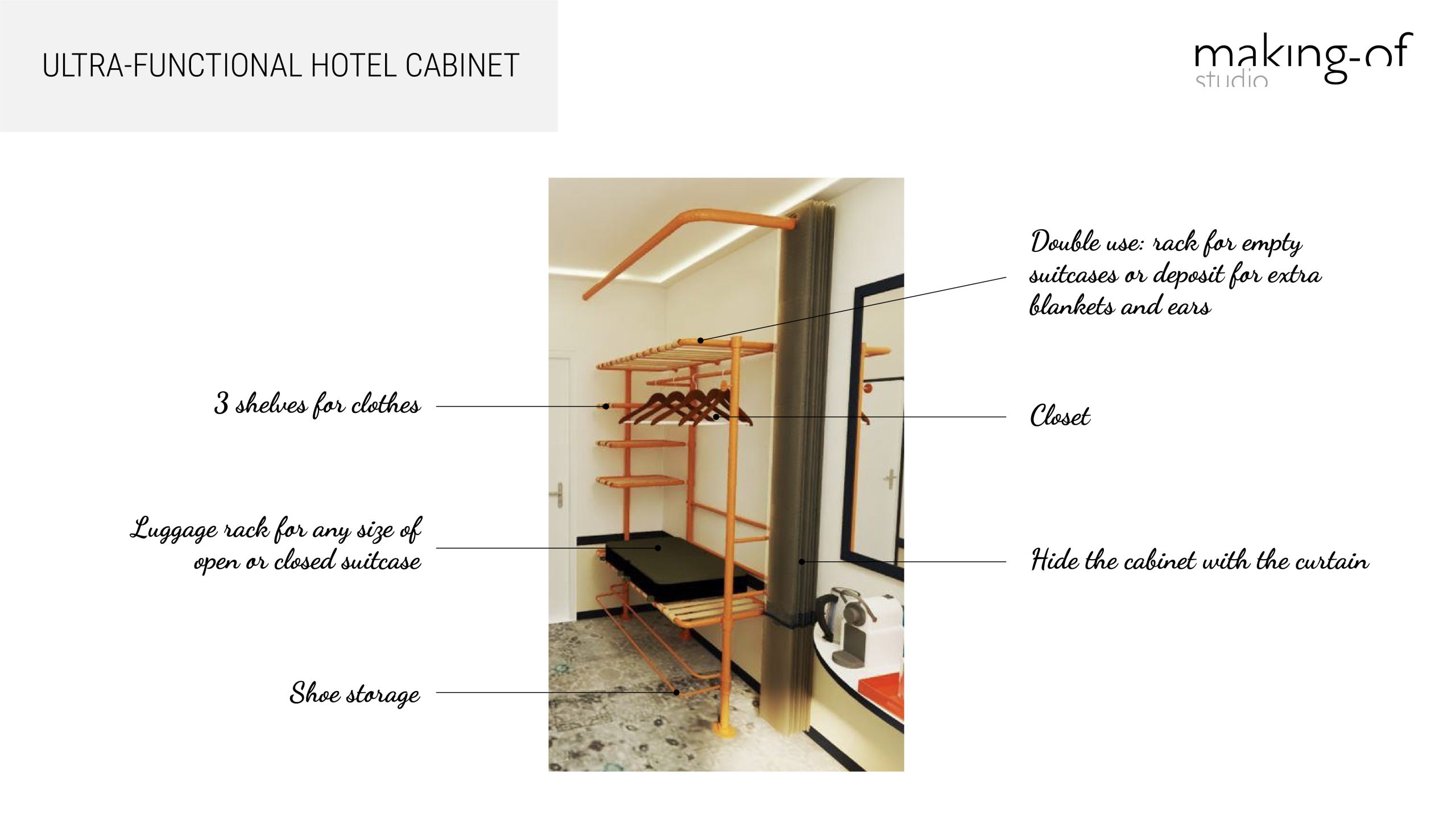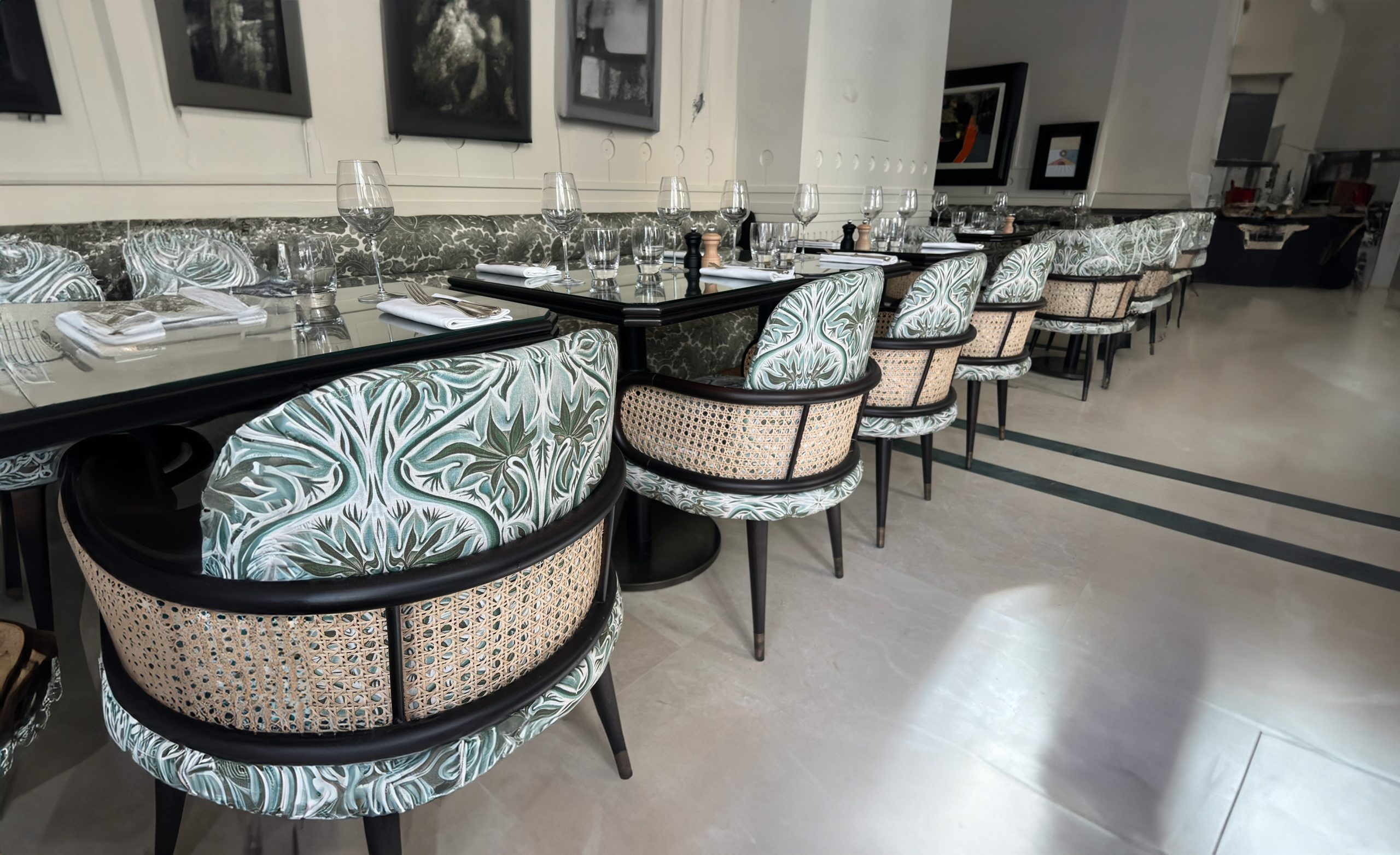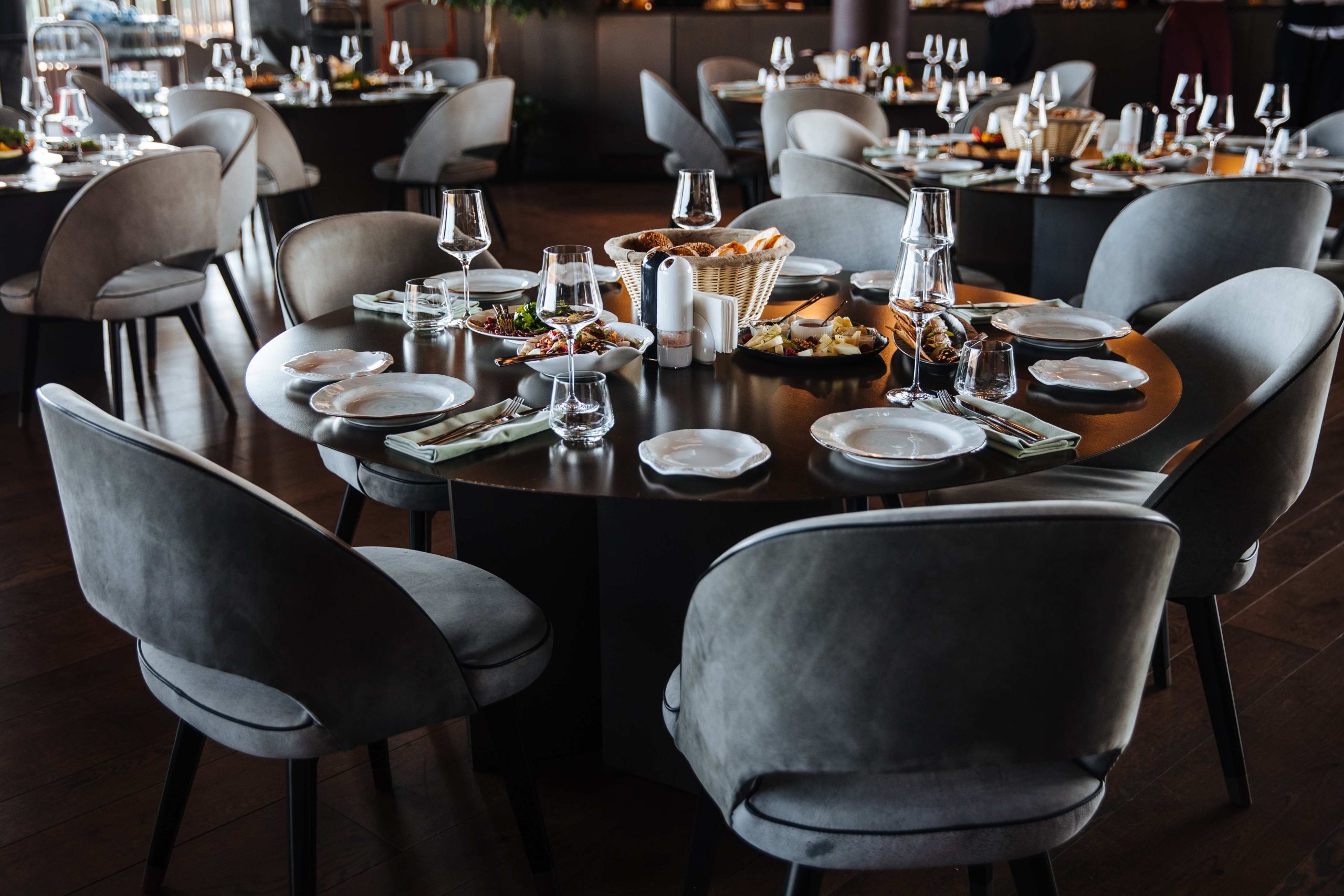The ergonomics of restaurant and hotel furniture are essential to customer satisfaction. In this article, we explain why this is so, and how it is beneficial in the long term for furniture that is more practical on a daily basis and, above all, more durable.
What is ergonomics ?
Ergonomics, in its global definition, aims to improve safety and well-being, and to optimise comfort, use and space. It encompasses concepts such as ease of use, flexibility and versatility. By focusing on ergonomics, we aim to encourage correct posture, provide an easy user experience, and enable adaptability to the sometimes specific needs of the user. Ergonomic furniture is distinguished by its ability to be adjustable, so that it can be tailored to the different requirements and preferences of users. In short, ergonomics aims to create functional and flexible solutions that contribute to an optimal working or living environment.
Burgundy patio table
Chevet hôtel des Trois Châteaux
What are the features and benefits of ergonomic furniture?
For furniture to be ergonomic, a number of variables need to be considered: the function of the room in which it is to be placed, the role that the piece of furniture will play, its usefulness, its aesthetic appeal, the quality of the materials used in relation to the stresses to which it will be subjected… But also its suitability for the DNA and/or history of the place.
Examples of ergonomic furniture
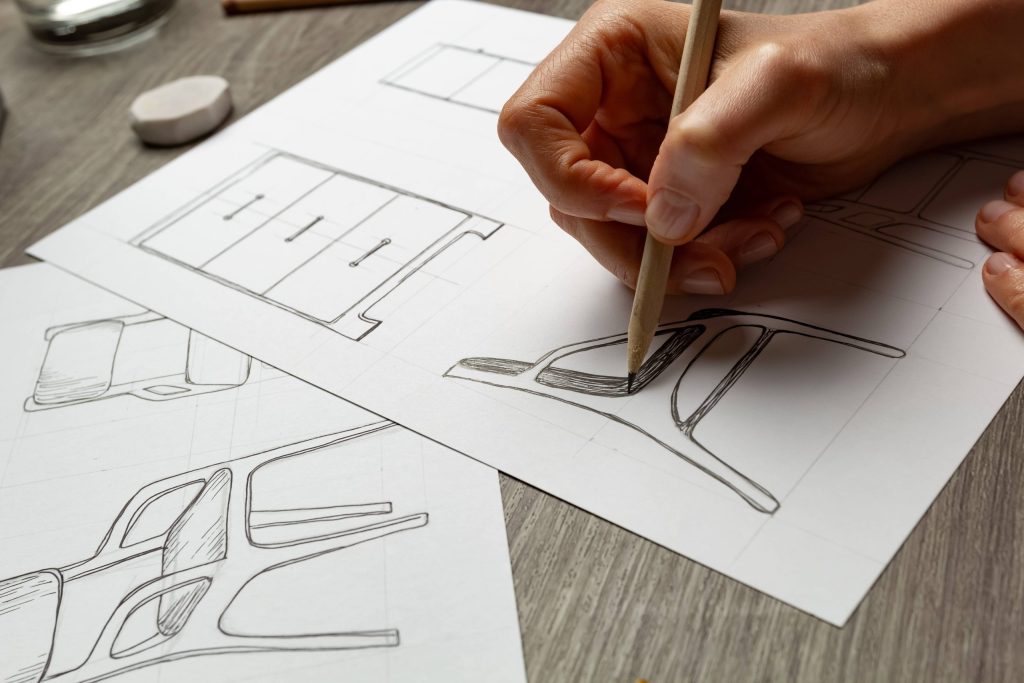
The chairs at the Pushkin café
Restaurant chairs at the Burgundy Paris 5*.
The chairs in the "Pourquoi pas" restaurant at the 5* Hôtel Castelbrac
The ultra-functional hotel wardrobe
The central island of the Burgundy Paris 5* restaurant
2015 renovation of the Burgundy Paris 5* restaurant Le Baudelaire
Ergonomic furniture: positive long-term results
- An outstanding customer experience that can lead to repeat business and referrals.
- Market differentiation thanks to unique furniture that is consistent with the establishment’s brand image.
- Longer-lasting furniture, because the materials used are high quality and easy to maintain.
- A long-term investment by avoiding the installation of furniture that is ultimately unsuited to the location and operating constraints.
- Increased employee productivity thanks to the adaptability of the furniture to their needs.
